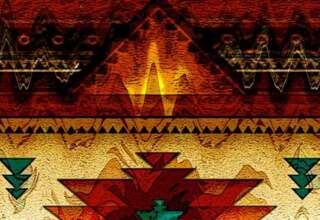
Polynesian settlers in New Zealand developed a distinct society over several hundred years. Social groups were tribal, with no unified society or single Māori identity until after the arrival of Europeans. Nevertheless, common elements could be found in all Māori groups in pre-European New Zealand, including a shared Polynesian heritage, a common basic language, familial associations, traditions of warfare, and similar mythologies and religious beliefs. Most Māori lived in villages, which were inhabited by several whānau (extended families) who collectively formed a hapū (clan or subtribe). Māori society across New Zealand was broadly stratified into three classes of people: rangatira, chiefs and ruling families; tūtūā, commoners; and mōkai, slaves. Tohunga also held special standing in their communities as specialists of revered arts, skills and esoteric knowledge.
By the start of the 20th century, a greater awareness had emerged of a unified Māori identity, particularly in comparison to Pākehā, who now overwhelmingly outnumbered the Māori as a whole. Māori and Pākehā societies remained largely separate—socially, culturally, economically and geographically—for much of the 19th and early 20th centuries.[170] The key reason for this was that Māori remained almost exclusively a rural population, whereas increasingly the European population was urban especially after 1900. Many Māori did migrate to larger rural towns and cities during the Depression and post-WWII periods in search of employment, leaving rural communities depleted and disconnecting many urban Māori from their traditional social controls and tribal homelands. Yet while standards of living improved among Māori, they continued to lag behind Pākehā in areas such as health, income, skilled employment and access to higher levels of education.
While the arrival of Europeans had a profound impact on the Māori way of life, many aspects of traditional society have survived into the 21st century. Māori participate fully in all spheres of New Zealand culture and society, leading largely Western lifestyles while also maintaining their own cultural and social customs. The traditional social strata of rangatira, tūtūā and mōkai have all but disappeared from Māori society, while the roles of tohunga and kaumātua are still present. Traditional kinship ties are also actively maintained, and the whānau in particular remains an integral part of Māori life.
Māori society at a local level is particularly visible at the marae. Formerly the central meeting spaces in traditional villages, marae today usually comprise a group of buildings around an open space, that frequently host events such as weddings, funerals, church services and other large gatherings, with traditional protocol and etiquette usually observed. They also serve as the base of one or sometimes several hapū.





